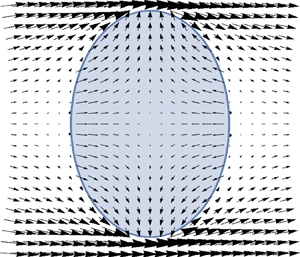Crossref Citations
This article has been cited by the following publications. This list is generated based on data provided by
Crossref.
Obenauf, D. G.
and
Sojka, P. E.
2021.
Theoretical deformation modeling and drop size prediction in the multimode breakup regime.
Physics of Fluids,
Vol. 33,
Issue. 9,
Jackiw, Isaac M.
and
Ashgriz, Nasser
2021.
On aerodynamic droplet breakup.
Journal of Fluid Mechanics,
Vol. 913,
Issue. ,
Hu, Liang
She, Lei
Fang, Yanshen
Su, Rui
and
Fu, Xin
2021.
Deformation characteristics of droplet generated by Rayleigh jet breakup.
AIP Advances,
Vol. 11,
Issue. 4,
Al Qubeissi, Mansour
Sazhin, Sergei S.
Al-Esawi, Nawar
Kolodnytska, Ruslana
Khanal, Bidur
Ghaleeh, Mohammed
and
Elwardany, Ahmed
2021.
Heating and Evaporation of Droplets of Multicomponent and Blended Fuels: A Review of Recent Modeling Approaches.
Energy & Fuels,
Vol. 35,
Issue. 22,
p.
18220.
Wang, Zi-Yu
Zhao, Hui
Li, Wei-Feng
Xu, Jian-Liang
and
Liu, Hai-Feng
2021.
Secondary breakup of shear thickening suspension drop.
Physics of Fluids,
Vol. 33,
Issue. 9,
Hadj-Achour, M.
Rimbert, N.
Gradeck, M.
and
Meignen, R.
2021.
Fragmentation of a liquid metal droplet falling in a water pool.
Physics of Fluids,
Vol. 33,
Issue. 10,
Kirar, Pavan Kumar
Soni, Surendra Kumar
Kolhe, Pankaj S.
and
Sahu, Kirti Chandra
2022.
An experimental investigation of droplet morphology in swirl flow.
Journal of Fluid Mechanics,
Vol. 938,
Issue. ,
Jackiw, Isaac M.
and
Ashgriz, Nasser
2022.
Prediction of the droplet size distribution in aerodynamic droplet breakup.
Journal of Fluid Mechanics,
Vol. 940,
Issue. ,
Fan, Siyu
Chen, Shiqiang
Wu, Zhirong
Wu, Shixian
Chen, Yongping
Liu, Dong
Yao, Yuhong
and
Huang, Junxin
2022.
Analysis of droplet size distribution and selection of spray parameters based on the fractal theory.
Journal of Cleaner Production,
Vol. 371,
Issue. ,
p.
133315.
Bian, Qingyong
Zhu, Chengxiang
Wang, Jingxin
Zhao, Ning
Zhao, Huanyu
and
Zhu, Chunling
2022.
Numerical investigation on the characteristics of single droplet deformation in the airflow at different temperatures.
Physics of Fluids,
Vol. 34,
Issue. 7,
Sor, Suthyvann
Garcia-Magariño, Adelaida
and
Velazquez, Angel
2022.
On the viscosity term in the Droplet Ratio Deformation model.
Kewalramani, Gagan
Ji, Bowen
Dossmann, Yvan
Gradeck, Michel
and
Rimbert, Nicolas
2022.
Experimental analysis of Lagrangian paths of drops generated by liquid/liquid sprays.
Experiments in Fluids,
Vol. 63,
Issue. 9,
Wei, Linkai
Meignen, Renaud
Picchi, Stéphane
and
Rimbert, Nicolas
2023.
Analysis and sensitivity study of steam explosion loads.
Annals of Nuclear Energy,
Vol. 194,
Issue. ,
p.
110064.
Xu, Zhikun
Wang, Tianyou
and
Che, Zhizhao
2023.
Transitions of breakup regimes for viscous droplets in airflow.
Fuel,
Vol. 339,
Issue. ,
p.
127355.
Ling, Y.
and
Mahmood, T.
2023.
Detailed numerical investigation of the drop aerobreakup in the bag breakup regime.
Journal of Fluid Mechanics,
Vol. 972,
Issue. ,
Li, Yang
Xu, Zhikun
Peng, Xiaoyun
Wang, Tianyou
and
Che, Zhizhao
2023.
Numerical simulation of secondary breakup of shear-thinning droplets.
Physics of Fluids,
Vol. 35,
Issue. 1,
Wang, Zi-Yu
Yao, Feng
Zhao, Hui
Shi, Zhe-Hang
and
Liu, Hai-Feng
2023.
Hemline breakup of gel drops subjected to a continuous air flow.
Journal of Fluid Mechanics,
Vol. 959,
Issue. ,
Xu, Zhikun
Wang, Tianyou
and
Che, Zhizhao
2023.
Breakup of particle-laden droplets in airflow.
Journal of Fluid Mechanics,
Vol. 974,
Issue. ,
Xu, Xinsheng
Qiu, Fengrong
Ding, Ming
and
Guo, Zehua
2023.
Numerical simulation of melt jet breakup under non solidification conditions.
Progress in Nuclear Energy,
Vol. 166,
Issue. ,
p.
104940.
Rimbert, Nicolas
Hadj-Achour, Miloud
Ji, Bowen
Kewalramani, Gagan
Labergue, Alexandre
Dossmann, Yvan
Gradeck, Michel
Piluso, Pascal
and
Meignen, Renaud
2023.
Mass log-stable distribution of fragments in liquid–liquid jet fragmentation based on a two-step cascade between viscous shear instability and Rayleigh–Taylor instability.
International Journal of Multiphase Flow,
Vol. 167,
Issue. ,
p.
104518.




